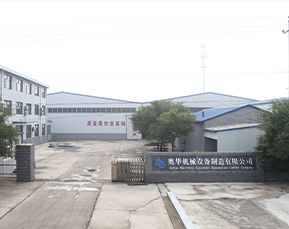 Afrikaans
Afrikaans  Albanian
Albanian  Amharic
Amharic  Arabic
Arabic  Armenian
Armenian  Azerbaijani
Azerbaijani  Basque
Basque  Belarusian
Belarusian  Bengali
Bengali  Bosnian
Bosnian  Bulgarian
Bulgarian  Catalan
Catalan  Cebuano
Cebuano  Corsican
Corsican  Croatian
Croatian  Czech
Czech  Danish
Danish  Dutch
Dutch  English
English  Esperanto
Esperanto  Estonian
Estonian  Finnish
Finnish  French
French  Frisian
Frisian  Galician
Galician  Georgian
Georgian  German
German  Greek
Greek  Gujarati
Gujarati  Haitian Creole
Haitian Creole  hausa
hausa  hawaiian
hawaiian  Hebrew
Hebrew  Hindi
Hindi  Miao
Miao  Hungarian
Hungarian  Icelandic
Icelandic  igbo
igbo  Indonesian
Indonesian  irish
irish  Italian
Italian  Japanese
Japanese  Javanese
Javanese  Kannada
Kannada  kazakh
kazakh  Khmer
Khmer  Rwandese
Rwandese  Korean
Korean  Kurdish
Kurdish  Kyrgyz
Kyrgyz  Lao
Lao  Latin
Latin  Latvian
Latvian  Lithuanian
Lithuanian  Luxembourgish
Luxembourgish  Macedonian
Macedonian  Malgashi
Malgashi  Malay
Malay  Malayalam
Malayalam  Maltese
Maltese  Maori
Maori  Marathi
Marathi  Mongolian
Mongolian  Myanmar
Myanmar  Nepali
Nepali  Norwegian
Norwegian  Norwegian
Norwegian  Occitan
Occitan  Pashto
Pashto  Persian
Persian  Polish
Polish  Portuguese
Portuguese  Punjabi
Punjabi  Romanian
Romanian  Russian
Russian  Samoan
Samoan  Scottish Gaelic
Scottish Gaelic  Serbian
Serbian  Sesotho
Sesotho  Shona
Shona  Sindhi
Sindhi  Sinhala
Sinhala  Slovak
Slovak  Slovenian
Slovenian  Somali
Somali  Spanish
Spanish  Sundanese
Sundanese  Swahili
Swahili  Swedish
Swedish  Tagalog
Tagalog  Tajik
Tajik  Tamil
Tamil  Tatar
Tatar  Telugu
Telugu  Thai
Thai  Turkish
Turkish  Turkmen
Turkmen  Ukrainian
Ukrainian  Urdu
Urdu  Uighur
Uighur  Uzbek
Uzbek  Vietnamese
Vietnamese  Welsh
Welsh  Bantu
Bantu  Yiddish
Yiddish  Yoruba
Yoruba  Zulu
Zulu ceramic lagging conveyor pulley
Understanding Ceramic Lagging on Conveyor Pulleys
Conveyor systems are pivotal in modern industrial operations, serving as the backbone of material handling across various sectors, from mining to manufacturing. Among the many components that contribute to the efficiency and functionality of a conveyor system, the conveyor pulley plays a crucial role. One significant advancement in enhancing the performance and durability of conveyor pulleys is the application of ceramic lagging.
What is Ceramic Lagging?
Ceramic lagging refers to the application of ceramic tiles or coatings on the surface of conveyor pulleys. These tiles are typically made from hard ceramic materials that offer increased wear resistance and improved traction. The primary function of ceramic lagging is to enhance the performance of the conveyor system by providing several benefits, including improved grip, reduced slippage, and extended service life of pulleys.
Benefits of Ceramic Lagging
1. Enhanced Traction One of the most significant advantages of ceramic-lagged pulleys is their ability to provide superior traction compared to traditional rubber lagging. The textured surface of ceramic tiles creates a stronger grip on the conveyor belt, ensuring that the belt moves smoothly and effectively, reducing the chances of slippage. This is particularly important in applications involving heavy loads or steep inclines.
2. Durability and Wear Resistance Ceramic materials are inherently resistant to abrasion, making them ideal for applications where wear and tear are a concern. Traditional rubber lagging can wear out quickly in harsh conditions, leading to frequent replacements and added maintenance costs. In contrast, ceramic lagging can withstand more rigorous wear, resulting in longer-lasting performance and reduced downtime.
3. Temperature Resistance Ceramic lagging can endure extreme temperature fluctuations without compromising its structural integrity. This characteristic is particularly advantageous in industries where high-temperature materials are handled, such as in metal processing or material transport involving heat-sensitive items.
ceramic lagging conveyor pulley

4. Reduced Maintenance Because ceramic lagging lasts longer and performs better under stress, maintenance needs are significantly reduced. Companies can save on labor costs and production delays caused by frequent pulley inspections and replacements, thus contributing to overall operational efficiency.
5. Improved Safety Enhanced traction and reduced slippage contribute to safer operation within industrial facilities. When conveyor systems function effectively, the risk of material spills or accidents decreases, promoting a safer working environment for employees.
Applications of Ceramic Lagging
Ceramic lagging is particularly beneficial in various industries, including mining, cement production, agriculture, and bulk material handling. For instance, in the mining industry, where conveyor systems transport heavy ores and minerals, ceramic-lagged pulleys provide the necessary durability and grip to handle rough materials and demanding operational conditions. Similarly, in cement plants, where heavy loads and abrasive materials are the norms, using ceramic lagging ensures that the conveyor systems can perform reliably over time.
Installation and Maintenance Considerations
While the advantages of ceramic lagging are clear, it is essential to consider proper installation and maintenance practices to maximize its benefits. The installation process typically involves cleaning the pulley surface, applying an adhesive, and setting the ceramic tiles or sheets in place. Ensuring proper alignment and secure adhesion is crucial for optimal performance. Regular inspections are also vital to ensure that the ceramic lagging remains intact and adequately bonded to the pulley.
Conclusion
In conclusion, ceramic lagging on conveyor pulleys presents a significant improvement over traditional lagging materials. With benefits such as enhanced traction, increased durability, reduced maintenance needs, and improved safety, it is no wonder that ceramic lagging is gaining popularity across various industries. As companies strive to enhance their operational efficiency and reduce downtime, incorporating ceramic lagging into their conveyor systems is a strategic move that can lead to long-term benefits and cost savings. In a world where efficiency and reliability are paramount, embracing innovative solutions like ceramic lagging will continue to shape the future of material handling.
-
Revolutionizing Conveyor Reliability with Advanced Rubber Lagging PulleysNewsJul.22,2025
-
Powering Precision and Durability with Expert Manufacturers of Conveyor ComponentsNewsJul.22,2025
-
Optimizing Conveyor Systems with Advanced Conveyor AccessoriesNewsJul.22,2025
-
Maximize Conveyor Efficiency with Quality Conveyor Idler PulleysNewsJul.22,2025
-
Future-Proof Your Conveyor System with High-Performance Polyurethane RollerNewsJul.22,2025
-
Driving Efficiency Forward with Quality Idlers and RollersNewsJul.22,2025





























